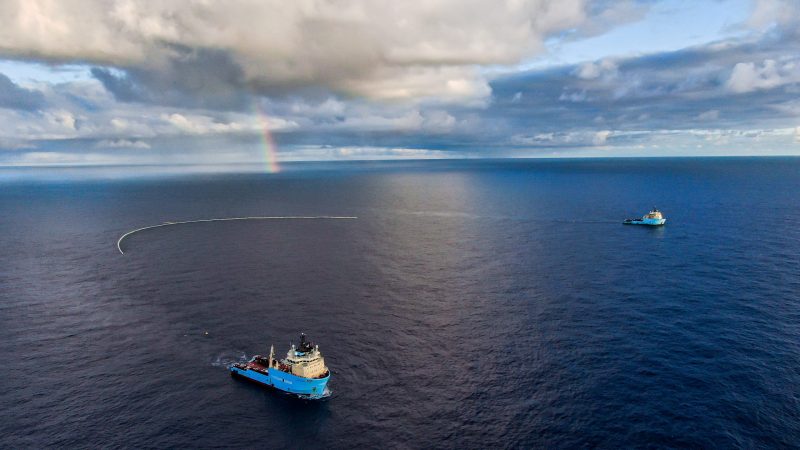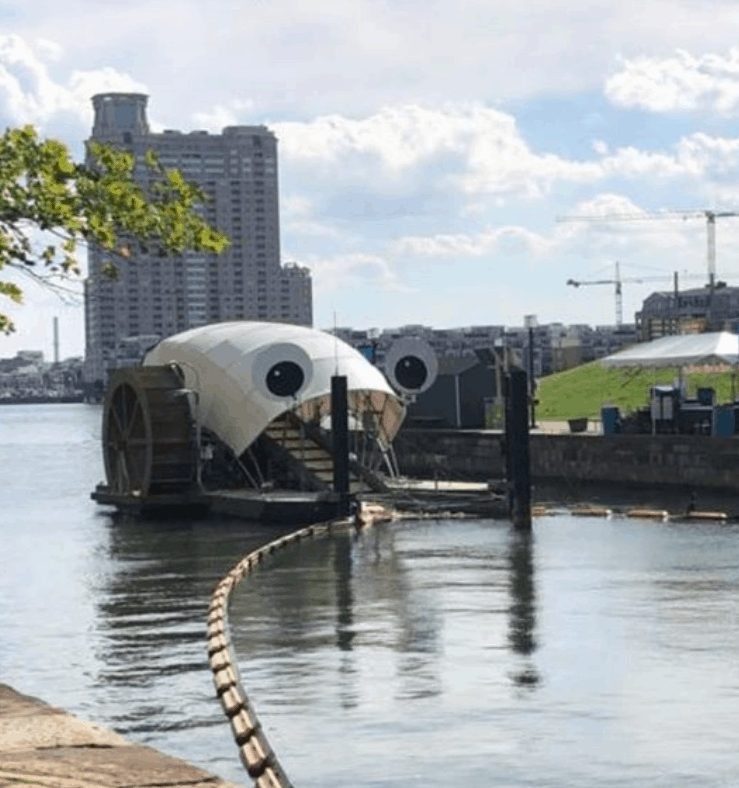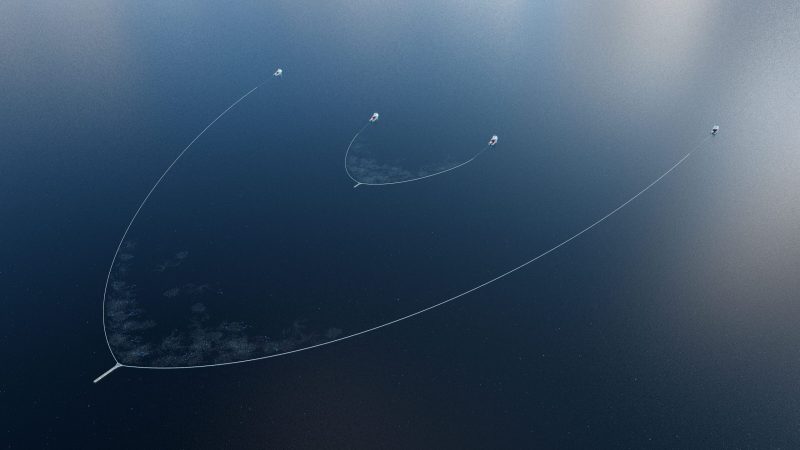
Cleaning up the Great Pacific Garbage Patch
The Ocean Cleanup – a nonprofit organization based in the Netherlands – garnered attention this week when it said on July 25, 2022 that it has now officially removed more than 220,000 pounds (100 U.S. tons, or 100,000 kilograms) of plastic from the Great Pacific Garbage Patch. That’s an amount about equal to the dry weight of a space shuttle. And yet the accomplishment, which has been in the works for some months, is not without controversy.
The Ocean Cleanup said it worked for a little less than a year to extract garbage from the Pacific, using what the organization calls System 002. Since August 2021, this group has swept an area of the sea about the size of Luxembourg or Rhode Island, approximately 1,100 square miles (3,000 square km).
But, all along, scientists have been objecting to a variety of issues with The Ocean Cleanup’s technique, from the killing of marine life that lives on the sea surface within the garbage patch, to using fossil fuels in the ships, and more. Some have even doubted the claims that The Ocean Cleanup is making. For example, marine biologist Rebecca Helm – an assistant professor at the University of North Carolina, Asheville – has written extensively about this subject on Twitter. And she didn’t mince words with this tweet from February of this year:
IS THIS TOTALLY FAKE? Is The Ocean Cleanup staging videos to sell their products and solution? A lot of marine folks think so. Here's why I'm not so sure, and why the bigger issue may be what you're NOT seeing… https://t.co/38NdvbzRYA
— Open Ocean Exploration (@RebeccaRHelm) February 15, 2022
The Great Pacific Garbage Patch
On this we can all agree. The Great Pacific Garbage Patch, sometimes called the Pacific trash vortex, is a blot on our planet, a giant floating mass of plastic garbage in the central North Pacific Ocean. This part of the ocean is what’s called a gyre, a great vortex, created by earthly winds and by Earth’s rotation. Currents bring trash from the shores of Asia, North America and South America to this gyre, where it tends to get trapped.
But the Great Pacific Garbage patch isn’t going away on its own. In fact, it’s rapidly accumulating more trash every day. It’s currently about twice the size of Texas.
What’s more, the garbage patch in the Pacific isn’t the only one. There’s an ocean garbage patch in the Atlantic, too. And here’s a look at a mass of plastic trash in the Caribbean.

How do we fix it then?
So what’s the best way to create trash-free oceans on our ocean world?
Experts agree the best way is to keep trash from entering our oceans in the first place. And, in our consumer society – according to many experts – that means we must address the mouths of rivers, the places where rivers empty into the sea. In Baltimore, Maryland, for example, a device called Mr. Trash Wheel – officially the Inner Harbor Water Wheel – pulls trash from the Jones Falls river as it empties into Baltimore’s Inner Harbor. It uses hydro and solar power and pulls hundreds of tons of trash out of the water each year. Mr. Trash Wheel funnels the trash out of the water onto its conveyor belt and then into a dumpster on a separate floating barge.
According to its website, the Mr. Trash Wheel family has collected more than 2,000 tons of trash and debris since it began operating in 2015. Contrast that amount to the 100 tons The Ocean Cleanup says it pulled from the Great Pacific Garbage Patch over this past year.
That contrast seems to indicate it’s easier to pull trash from the mouths of rivers than from the ocean itself.
Follow Mr. Trash Wheel on Twitter

Keep plastics from the waterways
Now let’s step back even further along trash’s journey, before the plastics get into the ocean and before the plastics get into the waterways. Because the very first step from preventing the garbage patches from growing even larger is, obviously, to use less plastic.
In 2019, National Geographic said:
Half of all plastics ever manufactured have been made in the last 15 years. Production increased exponentially, from 2.3 million tons in 1950 to 448 million tons by 2015. Production is expected to double by 2050.
So the Earth-friendly mantra “reduce, reuse, recycle” is as applicable as ever.

Back to ocean garbage patches
Of course, using less plastic and stopping it from entering the ocean are wonderful steps to a cleaner world. But they’re not going to fix the problem of the trash that’s already in our oceans.
A 2018 study showed the GPGP contains about 100,000,000 kilograms (about 110,000 U.S. tons) of accumulated trash. The Ocean Cleanup said that:
If we repeat this 100,000 kg haul 1,000 times – the Great Pacific Garbage Patch will be gone.
The Great Pacific Garbage Patch gone in 1,000 years?
So if it took The Ocean Cleanup one year to pull its first 1,000 kilograms from the ocean, we might – if technology stayed constant – foresee the end of the Great Pacific Garbage Patch 1,000 years in the future. But of course the technology will improve. The Ocean Cleanup will be the first to tell you that the tech they used for their first 100,000 kg was “experimental.” The Ocean Cleanup explained:
Now our technology is validated, we are ready to move on to our new and expanded System 003, which is expected to capture plastic at a rate potentially 10 times higher than System 002 through a combination of increased size, improved efficiency and increased uptime.
The Ocean Cleanup said it recycles the trash it extracts. It has already turned some of the plastics recently removed into sunglasses, which it sold to help fund its work … and which are already out of stock.
Just try not to lose them on a beach!

Bottom line: How can we clean up the garbage patches in our oceans? Some groups are trying to clean up the patches themselves while others are trying to stop the plastics from entering the oceans in the first place.











